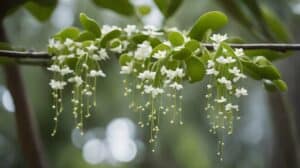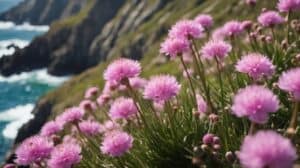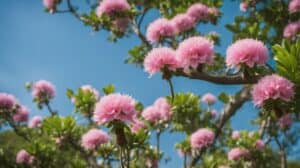Staghorn ferns are a unique type of fern that are becoming increasingly popular among plant enthusiasts.
These ferns are named for their antler-like fronds, which resemble the horns of a stag.
The most common type of staghorn fern is Platycerium bifurcatum, which is native to tropical regions of the world.

Staghorn ferns are epiphytes, meaning they grow on other plants rather than in soil.
This makes them an interesting addition to any plant collection, as they can be mounted on a variety of surfaces, such as wood or cork.
However, caring for staghorn ferns can be a bit tricky, as they have specific requirements for light, water, and nutrients.
In this article, we will explore the best methods for mounting and maintaining Platycerium bifurcatum, so that you can enjoy these unique ferns in your own home.
Understanding Staghorn Ferns
Species Overview
Staghorn ferns are fascinating plants that belong to the genus Platycerium.
They are epiphytic, which means they grow on trees and other plants, but they are not parasitic.
There are about 18 species of staghorn ferns, but the most common one is Platycerium bifurcatum.
The name “staghorn” comes from the fronds, which resemble the antlers of a deer.
The plant has two types of fronds: sterile fronds that are flat and shield-shaped, and fertile fronds that are antler-like and bear spores.
Staghorn ferns are native to tropical and subtropical regions of Africa, Asia, Australia, and the Americas.
They are popular among plant enthusiasts because of their unique appearance and ease of care.
Natural Habitat
Staghorn ferns grow naturally on trees, rocks, and other surfaces in the rainforest canopy.
They attach themselves to their host plant using modified fronds called “holdfasts.” The holdfasts are not roots, but they absorb water and nutrients from the air and rain.
In their natural habitat, staghorn ferns are exposed to bright, filtered light and high humidity.
They are also protected from direct sunlight and strong winds by the canopy of the rainforest.
Understanding the natural habitat of staghorn ferns is important for their care and maintenance.
When grown indoors, they need to be provided with similar conditions to thrive.
This includes a well-draining potting mix, bright but indirect light, and regular misting to increase humidity.
Mounting Your Staghorn Fern

Choosing the Right Mounting Material
Before mounting your staghorn fern, it is important to choose the right mounting material. The most common options include wood, cork, or a wire basket.
If you choose wood, it is important to select a type that can withstand moisture, such as cedar or redwood.
Cork is another popular option that is lightweight and porous, allowing for air circulation around the fern.
A wire basket is also a great choice, as it allows for the fern to grow freely and provides ample air circulation.
Step-by-Step Mounting Process
-
Soak the mounting material in water for at least an hour to ensure it is fully hydrated.
-
Place the staghorn fern on the mounting material and position it in the desired location.
-
Use wire or fishing line to secure the fern to the mounting material. Be sure to wrap the wire or line around the base of the fern and tie it tightly.
-
If using wood or cork, you can also use screws or nails to secure the fern to the mounting material.
-
Hang the mounted fern in a location with indirect sunlight and good air circulation.
-
Water the fern regularly by misting the leaves and roots with a spray bottle or soaking the entire mounting material in water for a few minutes.
By following these simple steps, you can successfully mount and maintain your staghorn fern for years to come.
Daily Care and Maintenance

Watering Requirements
Staghorn ferns require regular watering to thrive. However, over-watering can cause root rot, so it’s important to find a balance.
The frequency of watering depends on the humidity and temperature of the environment.
In general, watering every other day is sufficient, but it’s important to check the moisture level of the mounting material before watering.
If the material feels dry, it’s time to water.
Light and Temperature
Staghorn ferns prefer bright, indirect light.
Direct sunlight can cause the fronds to burn, so it’s best to place the fern near a window with filtered light.
The ideal temperature range for staghorn ferns is between 60-80°F (15-27°C). Avoid placing the fern in a drafty area or near a heating or cooling vent.
Fertilizing Practices
Staghorn ferns benefit from regular fertilization to promote healthy growth.
Use a balanced, water-soluble fertilizer once a month during the growing season (spring and summer).
Dilute the fertilizer to half the recommended strength and apply it to the base of the plant.
Avoid getting fertilizer on the fronds as it can cause burning.
Overall, staghorn ferns are relatively low maintenance plants that can add a unique touch to any living space.
With proper care and attention, they can thrive and become a beautiful addition to any collection.
Frequently Asked Questions

What are the best practices for watering a mounted staghorn fern?
When it comes to watering a mounted staghorn fern, it’s important to strike a balance between keeping the plant hydrated and avoiding overwatering.
A good rule of thumb is to water your fern once a week, or whenever the top inch of the planting medium feels dry to the touch.
Be sure to water the plant thoroughly, allowing water to soak through the planting medium and drain out the bottom of the container.
How can I tell if my staghorn fern is receiving adequate light?
Staghorn ferns thrive in bright, indirect light. If the plant is receiving too much direct sunlight, the fronds may become scorched or yellowed.
On the other hand, if the plant is not receiving enough light, the fronds may appear stunted or pale.
A good indicator of adequate light is the color of the shield fronds, which should be a healthy green.
What steps should I take to mount my staghorn fern properly?
Mounting a staghorn fern can be a fun and rewarding project. First, choose a suitable mounting surface such as a piece of wood or a wire basket.
Then, prepare the fern by removing any dead or damaged fronds and trimming the roots to fit the mounting surface.
Next, attach the fern to the mounting surface using wire or fishing line, being careful not to damage the roots.
Finally, hang the mounted fern in a bright, humid location and water it regularly.
How can I identify and treat common diseases in staghorn ferns?
Staghorn ferns are generally hardy plants, but they can be susceptible to a few common diseases.
One of the most common issues is fungal rot, which can be identified by soft, mushy fronds and a foul odor.
To treat fungal rot, remove the affected fronds and improve air circulation around the plant.
Another common issue is scale insects, which can be identified by small, brown bumps on the fronds.
To treat scale insects, wipe the fronds with a damp cloth and apply a horticultural oil spray.
What is the ideal environment for an indoor staghorn fern?
Indoor staghorn ferns thrive in warm, humid environments with bright, indirect light.
They prefer temperatures between 60 and 80 degrees Fahrenheit and humidity levels between 40 and 60 percent.
To create a suitable environment, consider placing the fern near a humidifier or misting it regularly.
Why are the shield fronds on my staghorn fern turning brown and what can I do about it?
Brown shield fronds on a staghorn fern can be a sign of overwatering or underwatering.
If the fronds are turning brown and mushy, it’s likely that the plant is being overwatered.
To remedy this, reduce watering frequency and improve drainage. If the fronds are turning brown and dry, it’s likely that the plant is being underwatered.
To remedy this, increase watering frequency and mist the plant regularly.














